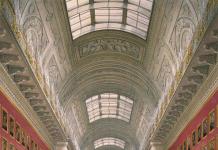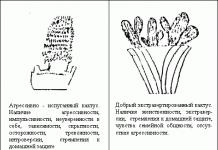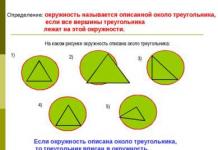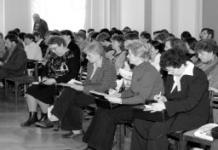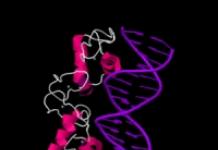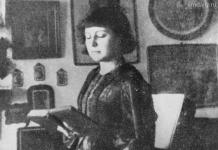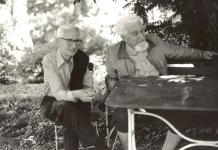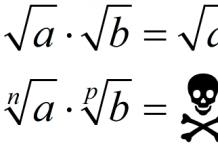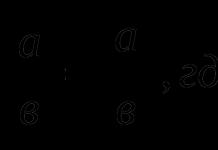Lermontov was one of those poets who, in vivid descriptions of nature, accurately and subtly expressed their attitude to everything that happened to them. This can be understood by anyone who carefully reads the verse “When the yellowing field is worried” by Mikhail Yuryevich Lermontov.
The poem was created in 1837. This period was one of the most difficult in the poet’s life. The investigation into Lermontov’s “revolutionary” activities was in full swing. The poet himself was in a St. Petersburg prison. The text of Lermontov’s poem “When the yellowing field is agitated,” which is taught in a literature lesson in the 8th grade, was written using charred matches. In prison, the poet had neither paper nor ink. The lyrical hero admires the “yellowing cornfield”, enjoys the noise of the “fresh forest”, reverently listens to the sounds of the icy spring that “plays along the ravine”. In these manifestations of Russian nature, he sees both a mystery and a solution at the same time. Lermontov was not satisfied with the existing regime. He despised both the servility of the people and his own weakness. In his opinion, he did not have such a bright talent to inspire people to fight for their rights. Those in power had a different opinion. They considered Lermontov a dangerous troublemaker, and therefore preferred to keep him away from St. Petersburg.
The lyrical hero believes that better times will certainly come. Observing the peaceful nature, he feels how anxiety fades away, “the wrinkles on the forehead disperse.” Turning his gaze to the sky, he mentally sees God, who silently looks at what is happening on earth. Precisely anticipating his imminent death, the poet assumes that the situation in Russia will change for the better only after his death. You can download this work in full or study it online on our website.
When the yellowing field is agitated,
And the fresh forest rustles with the sound of the breeze,
And the raspberry plum is hiding in the garden
Under the sweet shade of the green leaf;
When sprinkled with fragrant dew,
On a ruddy evening or morning at the golden hour,
From under a bush I get a silver lily of the valley
Nods his head affably;
When the icy spring plays along the ravine
And, plunging my thoughts into some kind of vague dream,
Babbles a mysterious saga to me
About the peaceful land from which he rushes, -
Then the anxiety of my soul is humbled,
Then the wrinkles on the forehead disperse, -
And I can comprehend happiness on earth,
And in the sky I see God.
Analysis of the poem
1. The history of the creation of the work.
2. Characteristics of the work lyrical genre(type of lyrics, artistic method, genre).
3. Analysis of the content of the work (analysis of the plot, characteristics of the lyrical hero, motives and tonality).
4. Features of the composition of the work.
5. Analysis of funds artistic expression and versification (the presence of tropes and stylistic figures, rhythm, meter, rhyme, stanza).
6. The meaning of the poem for the poet’s entire work.
The poem “When the yellowing field is agitated...” was written by M.Yu. Lermontov in February 1837, when the poet was under arrest in the building of the St. Petersburg General Staff for writing poems on the death of Pushkin. Only the valet who brought lunch was allowed in to see him. The bread was wrapped in gray paper. It was on it (with the help of a match, stove soot and wine) that this poem was written.
The genre of the work is landscape miniature, with elements of philosophical meditation.
The landscape in this poem is not one fleeting picture of nature, but several poetic pictures interconnected with each other. The poet tells how “the yellowing cornfield worries” at the light sound of the breeze, how the fresh forest rustles thoughtfully, how playfully “the raspberry plum hides in the garden,” how “the icy spring plays along the ravine.” By creating bright, picturesque paintings, Lermontov personifies nature: “the silver lily of the valley nods its head affably,” the “icy spring” babbles a “mysterious saga.”
Further we observe in the work a reverse gradation of color epithets. Bright, rich colors become vague, color turns into light, and then color epithets completely disappear from the text. So, in the first stanza we see “yellowing cornfield”, “raspberry plum”, “green leaf”. Then the nature of the definitions changes somewhat: “ruddy evening”, “golden hour of the morning”, “silver lily of the valley”. In the third stanza, color epithets are replaced by others: “vague dream”, “mysterious saga”, “peaceful land”.
We observe exactly the same gradation in relation to the objectivity of the picture of the surrounding world. If in the first stanza this objectivity is preserved (the field is agitated, the forest is noisy, the plum tree is hiding under a bush), then in the second stanza we have the hero’s individual and personal perception of nature: “the silver lily of the valley nods its head to me in a welcoming manner.” We observe the same phenomenon in the third stanza: “the key... Babbles to me a mysterious saga”).
The principle of reverse gradation underlies the creation of both the artistic time of a work and artistic space. So, the first stanza probably depicts summer. The second stanza speaks of spring (“silver lily of the valley”), the time of day here seems to spread out in its uncertainty: “In the ruddy evening or in the morning the golden hour.” And the third stanza does not contain any indication of the season at all.
The artistic space of the poem proceeds according to the degree of narrowing up to a certain point. In the first stanza we see a fairly wide landscape panorama: field, forest, garden. Then a bush and a lily of the valley remain in the field of view of the lyrical hero. But then again the space expands (as if breaks through) thanks to the key, which rushes from nowhere:
When the icy spring plays along the ravine
And, plunging my thoughts into some kind of vague dream,
Babbles a mysterious saga to me
About the peaceful land from which he rushes.
Here this artistic space becomes endless. This picture is the culmination of the poem.
Then we plunge into the realm of the lyrical hero’s feelings. And here we also see a certain gradation. “The final quatrain contains a reverse movement - from the soul to the universe, but already enlightened and spiritualized. Its four verses are the four stages of this movement: “Then the anxiety of my soul is humbled” - the inner world of man; “Then the wrinkles on the forehead disperse” - the appearance of a person; “And I can comprehend happiness on earth” - the near world, surrounding a person; “And in the heavens I see God” - the distant world that closes the universe; the poet’s attention moves as if in diverging circles,” writes M.L. Gasparov.
Compositionally, we distinguish two symmetrical parts in the poem. The first part is pictures of nature. The second part is the area of the lyrical hero’s feelings. The composition of the poem is reflected in its metrics.
The poem is written in quatrains. The first stanza is written in iambic hexameter, in the second and third stanzas alternate between hexameter and pentameter, the last stanza again returns to iambic hexameter, but the last line is shortened (iambic tetrameter). Lermontov uses cross and ring (last stanza) rhymes. The poet uses a variety of means of artistic expression: personification (“the silver lily of the valley nods its head affably”), epithets (“on a ruddy evening”, “at the golden hour”, “vague dream”), anaphora (“And I can comprehend happiness on earth, And in in heaven I see God..."). The entire poem represents a period in which there is syntactic parallelism (“Then the anxiety of my soul is humbled, Then the wrinkles on my brow disperse”).
Thus, the beauty and harmony of the surrounding world pacify the excitement of the lyrical hero, the anxiety of his soul, bringing all thoughts and feelings into order. His soul rushes to God, and “how much faith, how much spiritual love is then expressed in our poet, branded an unbelieving denier”! In its meaning, the poem is related to such works by Lermontov as “Prayer”, “In a difficult moment of life...”, “Branch of Palestine”.
The poem “When the yellowing field is agitated...” is not only about the beauty of nature, as it might seem at first glance. It is about the fact that only in unity with nature can a person find harmony.
Lermontov's early and late lyrics are noticeably different. If at the very beginning creative path While the poet was naively enthusiastic, later he began to worry about social issues. That is why this work stands out among others. Below is an analysis of the poem "When the yellowing field is agitated..."
Brief history of writing
The analysis of the poem “When the yellowing field is agitated...” should begin with a historical remark: in 1837, Lermontov was taken into custody because of another of his creations. He wrote “The Death of a Poet,” dedicated to the death of Pushkin, and many officials did not like it. The poet was in custody until the extent of the revolutionary nature of the poem was determined.
At that time, despite his young age, Mikhail Yuryevich was already skeptical about life and understood that society was not yet ready for changes. The Decembrist uprising served as proof of this. During his arrest, he creates a poem similar to an internal monologue.
This is one of the last things he wrote. lyrical works. According to eyewitnesses, he wrote it without using ink or paper. To create the lines “When the yellowing field is agitated...” Lermontov had to use charred matches, and as paper, take a food wrapper that his old servant brought him. Despite the fact that the poet sings of beauty native land, the key idea is that the places where he spent his childhood give him the strength to continue creating.

Construction Features
The next point in the analysis of the poem “When the yellowing field is agitated...” is about what meter it is written in and what rhyme is used. The work has a ring and the first stanza is written in iambic hexameter, in the second and third - alternating iambic hexameter and iambic pentameter. But distinctive feature poem "When the yellowing field is agitated..." is that the last line is written
Lermontov did not usually use this technique, but thanks to it, one gets the feeling that the poet was in a hurry to convey all his emotions and did not care about which rhyme would be more harmonious. This gives the poem a similarity to Russian folk songs that Lermontov liked.

Literary devices
When analyzing the poem “When the yellowing field is agitated...” it is important to clarify with what means of expressiveness the poet managed to create an atmosphere of mystery and tranquility. In order to show all the beauty of the landscape, the poet uses epithets that fill the work with colors characteristic of his poetry.
To give the poem lyricism, Lermontov turns to poetic epithets. All of the above means of expression help the reader to be transported to the region described and admire the light landscape sketches. To convey tender affection and admiration, Lermontov resorts to personification.
All of these techniques help the reader not only to imagine landscapes in a naturalistic way, but also to feel the breath of the breeze, and see how the cornfield sways, and hear how the forest rustles. The reader feels peace, as Lermontov once did, at the sight of familiar landscapes.

Poetic images
The next point in the analysis of the poem is the identification of the images created by the poet. Of course, there is a lyrical hero in the work. There is anxiety and confusion in his soul, he is trying to find answers to the questions that torment him... And only nature is able to give him harmony and calm.
Nature here acts as the guardian of harmony and peace. She is always happy for the hero to come and gives her beauty to make him feel enlightened. Nature always remains beautiful and majestic.
The analysis of “When the yellowing field is agitated...” will help schoolchildren take a deeper look at the poet’s work and learn more about Lermontov’s personality. This poem is a monologue of the poet about how he feels; only unity with the world around him will help put his emotions and thoughts in order. A person should not forget that man and nature are one, so we need to care for and value the environment.
(11 )
POEM “WHEN THE YELLOWING FIELDS WORRY...” (1837)
Genre: elegy.
COMPOSITION AND STORY
Most of the poem is a landscape sketch. The harmony of nature emphasizes the discord in the soul of the lyrical hero. The beauty of nature gives hope for reconnection with nature and people:
And I can comprehend happiness on earth,
And in the heavens I see God...
In the first three stanzas the concept of “world” is revealed, in the last the concepts of “I” and “God” appear.
The first three stanzas begin with the word “when,” and the last stanza repeats the word “then.”
IDEATORICAL AND THEMATIC CONTENT
⦁ Topic: the unity of man with nature.
⦁ Idea: the path from the soul to the universe, to the feeling of God, who is present in the beauty of the world and in the human soul, is described.
ART MEDIA
⦁ Epithets: vague dream, golden hour, ruddy evening, silver lily of the valley, etc.
⦁ Personifications: the lily of the valley nods its head, the crimson plum hides in the garden, the yellowing cornfield is agitated.
⦁ Metaphors: anxiety is subdued, wrinkles on the forehead disappear.
The poem was written by Lermontov in February 1837, when the poet was under arrest in the General Staff building in St. Petersburg for the poem “The Death of the Poet.” Only the valet who brought him lunch was allowed in to see him. The bread was wrapped in gray paper. This work was written on this paper using matches and stove soot.
The poem does not have a title, but its first line already interests the reader: what happens when “the yellowing field is agitated”? The entire poem consists of one sentence.
The first, second and third stanzas are all subordinate clauses time, reason and conditions (when) that reveal the meaning of one main sentence. Compositionally, the poem is divided into two parts. The first part depicts pictures of nature - each stanza begins with the word when.
The second part describes the feelings of the lyrical hero - they arise then. Depicting nature, the poet paints not one, but several poetic interconnected pictures.
He tells how “the yellowing cornfield is agitated” at the light sound of the breeze, how the fresh forest rustles thoughtfully, how “a raspberry plum is hiding in the garden,” how “the icy spring plays along the ravine.”
In these landscape sketches, Lermontov personifies nature: the lily of the valley “nods its head affably”, the key babbles a “mysterious saga”.
Depicting his favorite landscapes, the poet talks about endlessly renewing nature - about the different seasons. This is autumn (yellowing cornfield), and spring (fresh forest; silver lily of the valley), and summer (raspberry plum). The poem is rich in artistic and expressive means.
Poetic epithets create an atmosphere of lyrical mystery (sweet shadow; ruddy evening; vague dream; mysterious saga). Lermontov uses color epithets characteristic of his work (yellowing cornfield; raspberry plum; green leaf).
From artistic means the poet also uses anaphora (And I can comprehend happiness on earth, / and in heaven I see God...). The first stanza gives a wide landscape panorama: field, forest, garden.
Then the poet narrows the artistic space, leaving only a plum, a bush, a lily of the valley. But then the space expands again - it, together with the running icy spring, breaks through the horizons:
When the icy spring plays along the ravine
And, plunging my thoughts into some kind of vague dream,
Babbles a mysterious saga to me
About the peaceful land from which he rushes...
The artistic space becomes endless. This picture is the culmination of the poem. In the final quatrain, the poet talks about the feelings of his lyrical hero.
Four verses and four important transformations in a person: “Then the anxiety of my soul is humbled” - transformation inner world; “Then the wrinkles on the forehead disperse” - a change in appearance; “I can comprehend happiness on earth” - the possibility of perceiving the near world; “And in the heavens I see God...” - the possibility of perceiving the distant world, the universe.
Gives a feeling of peace, serene happiness, harmony of the world to the lyrical hero nature. And this involvement with the natural world allows the poet to say:
And I can comprehend happiness on earth,
And in the heavens I see God...
Poem by M.Yu. Lermontov's “When the yellowing field is agitated...” refers to the original poetic works dedicated to the natural beauties of his native land.
This poetic miniature in form is one complex sentence with several subordinate clauses. The first three quatrains of the poem describe the moment at which the purification of the soul of the lyrical hero occurs. Anxieties and worries go away “when the yellowing field is agitated and the fresh forest rustles at the sound of the breeze”, “when... the silver lily of the valley shakes its head in a welcoming manner”, “when the icy spring plays along the ravine”. The lyrical hero is internally calm when he is in the lap of nature, enjoys its beauty and feels part of the universe. Only such involvement with the natural world allows one to “comprehend happiness on earth” and see God in heaven.
The lyrical poem is rich in artistic and expressive means that depict the essence of true beauty. Poetic epithets create an atmosphere of quiet mystery: “under a sweet shadow”, “on a ruddy evening”, “in some vague dream”, “a mysterious saga”. Artistic personifications make it possible to make the described picture come alive: “the yellowing field is agitated,” “the fresh forest rustles at the sound of the breeze,” “a raspberry plum is hiding in the garden,” “the silver lily of the valley shakes its head affably,” “the icy spring... babbles to me a mysterious saga about a peaceful land from which he rushes.” Nature, as it were, plays with the lyrical hero, revealing to him its unknown facets. Lermontov's poem is filled with a feeling of peace, serene happiness, which is spilled in nature. And only after realizing this, the lyrical hero says:
Then the anxiety of my soul is humbled,
Then the wrinkles on the forehead disperse, -
And I can comprehend happiness on earth,
And in the heavens I see God...
This poetic miniature is the internal monologue of the hero. According to its mood, the poem by M.Yu. Lermontov’s “When the yellowing field is worried...” is optimistic, as it allows the lyrical hero, and with him the reader, to see the highest truth.
How did you understand what this poem M.Yu. Lermontov? (about the beauty and grandeur of nature)
Why does the last line of the work talk about God? (God can be seen in the heavens if you learn to comprehend the secrets and beauties of nature.)
Where, according to the poet, is harmony and beauty possible? (in nature)



